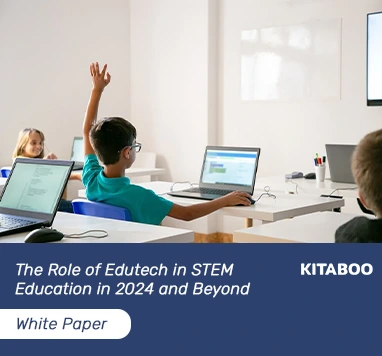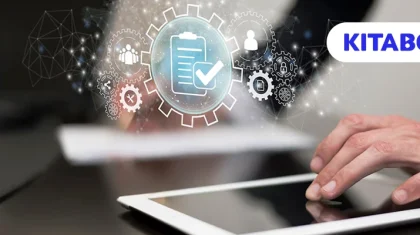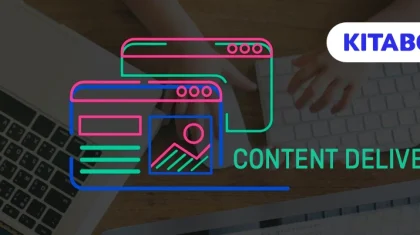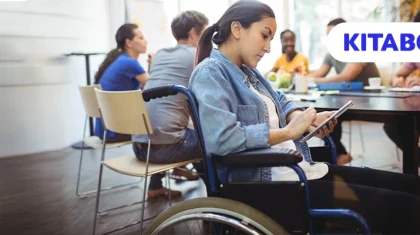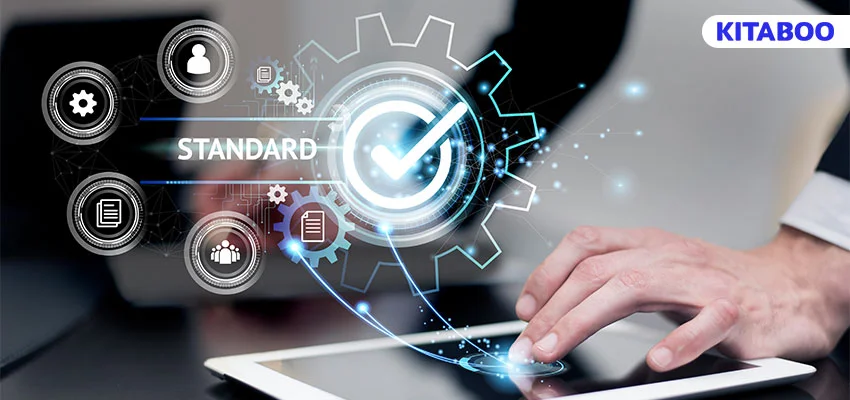
Interactive Textbooks: Elevating Learning With Cutting-Edge Technology Integration
When it comes to higher education, seasoned educators and institutions know the importance of student engagement.
As the curriculum and pedagogy advance to become more complex, only the inculcation of stimulating incentives and interactive elements makes it possible to retain the attention of a learner.
However, it’s easier said than done. According to a recent survey, it was found that 78% of the respondents felt online learning experiences lack appropriate engagement. Now, although no single aspect of online education can be accused of this adversity, it’s safe to assume digital learning resources are one of the bigger contributors.
In this blog, we will discuss the relevance of interactive textbooks in higher education and list some practical cutting-edge technology integration techniques for building them. Let’s begin!
Table of Contents:
I. What are Interactive Textbooks?
II. 5 Ways Interactive Textbooks Enhance Learning for Higher Education Students
- Simplify Learning
- Boost Student Engagement
- Offer Personalization Pros
- Adapt to Different Learning Styles
- Enhance Accessibility
III. 5 Ways to Implement Cutting-Edge Technology to Create Interactive Textbooks
- Employ AR and VR Solutions
- Integrate Artificial Intelligence (AI)
- Use Gamification
- Incorporate NLP Tools
- Leverage Data Analytics
IV. Wrapping Up
What are Interactive Textbooks?
Online education encompasses the optimization of a plethora of learning resources for facilitating learning. Within this landscape, interactive textbooks stand out as dynamic tools reshaping the traditional learning paradigm.
These digital resources integrate multimedia elements, quizzes, simulations, and interactive features, transforming static content into engaging and participatory learning experiences. Students can actively interact with the material, reinforcing understanding through multimedia content, quizzes, simulations, and other interactive elements.
In this regard, note that the one that proves to augment maximum engagement among students is interactive textbooks created with the help of top digital textbook platforms like KITABOO. Equipped with proactive, engaging digital elements, these textbooks are an elevated form of regular textbooks. They are designed to boost engagement and motivation by making learning simplistic, easy, and enjoyable.
Moreover, product managers can strategically employ interactive textbooks to enhance user engagement and satisfaction. These textbooks, especially when created with leading platforms, become powerful tools for creating a more immersive, enjoyable, and effective learning journey.
5 Ways Interactive Textbooks Enhance Learning for Higher Education Students
If you think interactive textbooks are only helpful for institutions seeking better engagement, you are wrong. These innovative digital learning materials confer an array of prolific benefits, especially in the context of higher education. For instance;
Simplify Learning
The idea of interactive textbooks largely revolves around facilitating learning by presenting real-world scenarios. These textbooks utilize multiple live elements like simulations and animations to create a realistic learning experience for students.
This tends to work better in comparison to the traditional, theory-based online learning approach as it simplifies the entire learning process and makes it more practical to comprehend.
Boost Student Engagement
Perhaps the most commonly reported benefit of interactive textbooks with cutting-edge technology integration is the amplified engagement among students.
All the elements that synthesize together to give birth to a piece of interactive textbook are highly stimulating. Whether you talk about the graphic elements or the audio plug-ins, they make the material appealing in both visual and auditory aspects. So naturally, students feel more immersed in their course, which subsequently augments learning engagement.
Offer Personalization Pros
In learning, the pros of personalization are immense. So much so that by the end of this year, the global personalized learning market is forecasted to surpass the value of $2 billion!
With the help of interactive textbooks, it’s possible to reap these advantages. These learning resources are quite easy to customize. As an educator, you can always include specific multimedia elements to support the unique learning needs of your students.
Adapt to Different Learning Styles
No two high school students have the same learning preference. While some may be comfortable with audio content, others may find visuals and simulations more conducive to learning.
Interactive textbooks prove to be an incredible enabler for each of these diverse learning styles. Built on digital textbook platforms like KITABOO, they contain a wide range of innovative multimedia elements. That helps them seamlessly adapt to different learning styles better.
Enhance Accessibility
Like any online learning resource, interactive textbooks are an on-the-go learning solution. This means that whether a student is physically available for an online class or not, you can enable them to go through a topic by simply sharing the lessons with them. These textbooks can be accessed anytime, anywhere, and so are free from the disadvantages of inaccessible physical textbooks.
5 Ways to Implement Cutting-Edge Technology to Create Interactive Textbooks
Technology has facilitated the development of everything, and interactive textbooks for higher education students aren’t an exception.
Here’s how to implement cutting-edge technology for creating interactive textbooks in higher education:
Employ AR and VR Solutions
The demand for Innovative Augmented Reality (AR) and Virtual Reality (VR) solutions is on the rise in the EdTech market. With their help, you can build robust interactive textbooks that allow students to optimize overlays and simulations to learn about topics in a practical manner.
Integrate Artificial Intelligence (AI)
Artificial Intelligence (AI) is another excellent way to infuse avant-garde technology in interactive textbooks. By integrating AI into your textbooks, you can easily offer personalized features that respond to queries or provide feedback and generate personalized content for each student in a jiffy.
Use Gamification
Perhaps the best way to make a textbook interactive for every student is to implement gamification in it. Just as the name suggests, gamification features are capable of turning assignments and lessons into competitive games and quizzes. This makes learning super engaging and incentivized for learners.
Incorporate NLP Tools
There are thousands of NLP (Natural Language Processing) tools currently available in the market. By optimizing their features, you can create a hyper-interactive textbook that not only creates customized content but also translates and communicates to give personalized results to learners.
Leverage Data Analytics
Data analytics is a powerful yet straightforward method to not only facilitate cutting-edge technology integration but also track its effectiveness. With the help of extracted data and insights, you can better comprehend a student’s need and introduce new technology in your interactive textbook.
Wrapping Up
In the realm of higher education, implementing efficient technology is the only promised way to ensure engaging, effective learning for your students. So, if you’re an institution, leverage the benefits of cutting-edge technology integration and create interactive textbooks.
In this regard, you can partner with KITABOO to produce and distribute interactive learning materials like eBooks and digital textbooks that are loaded with cutting-edge, creative technology.
Feel free to write to us at contact@kitaboo.com for more info!
Discover how a mobile-first training platform can help your organization.
Kitaboo is a cloud-based platform to create, deliver & track mobile-first interactive training content.

